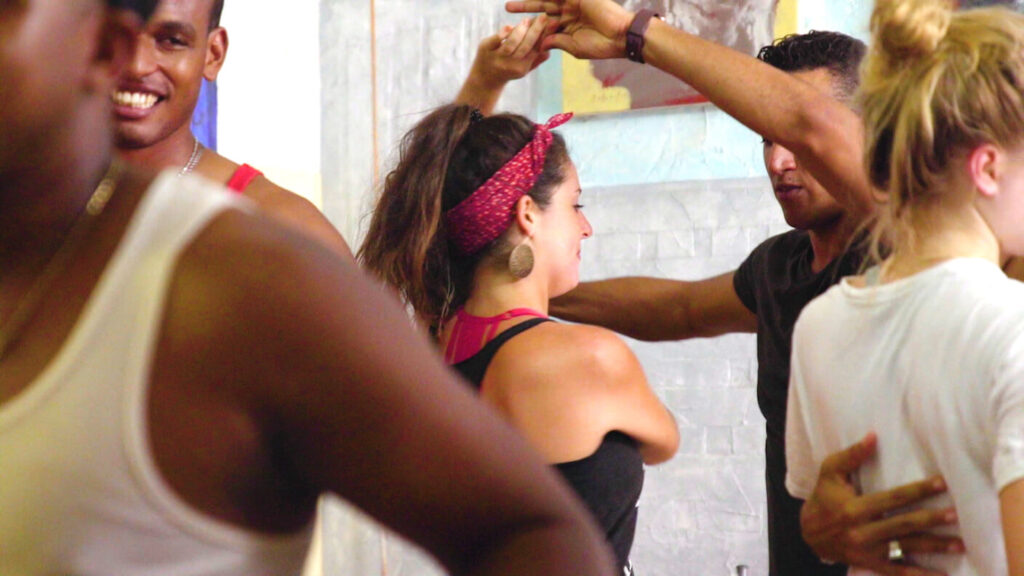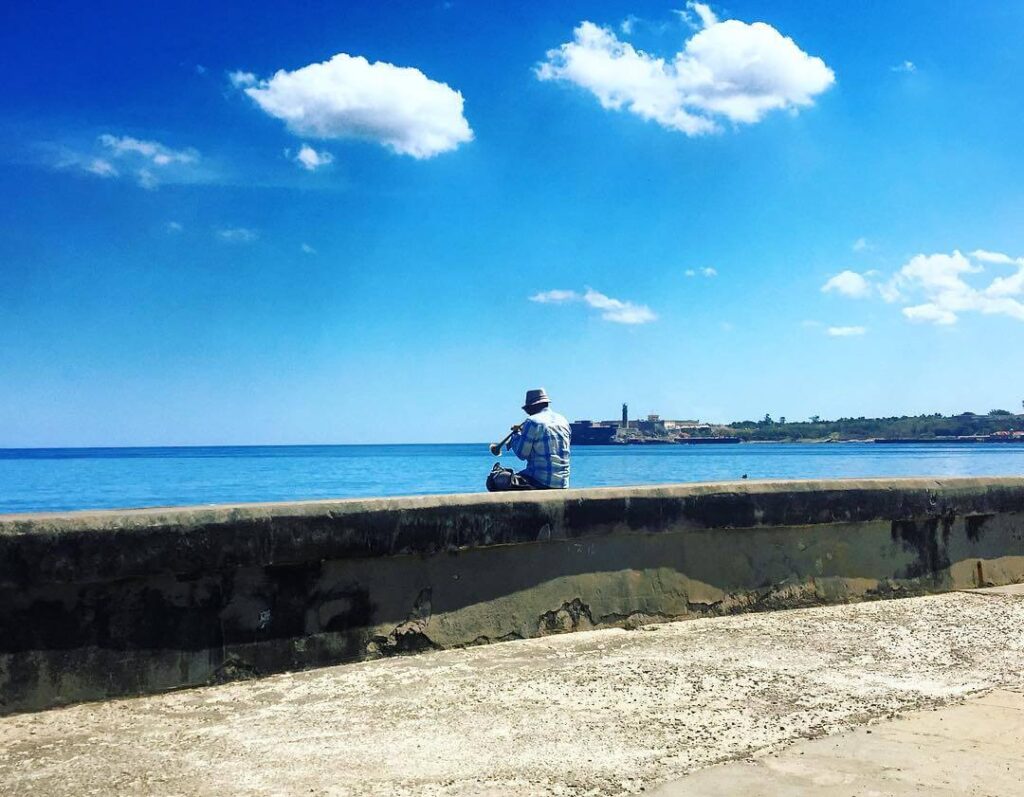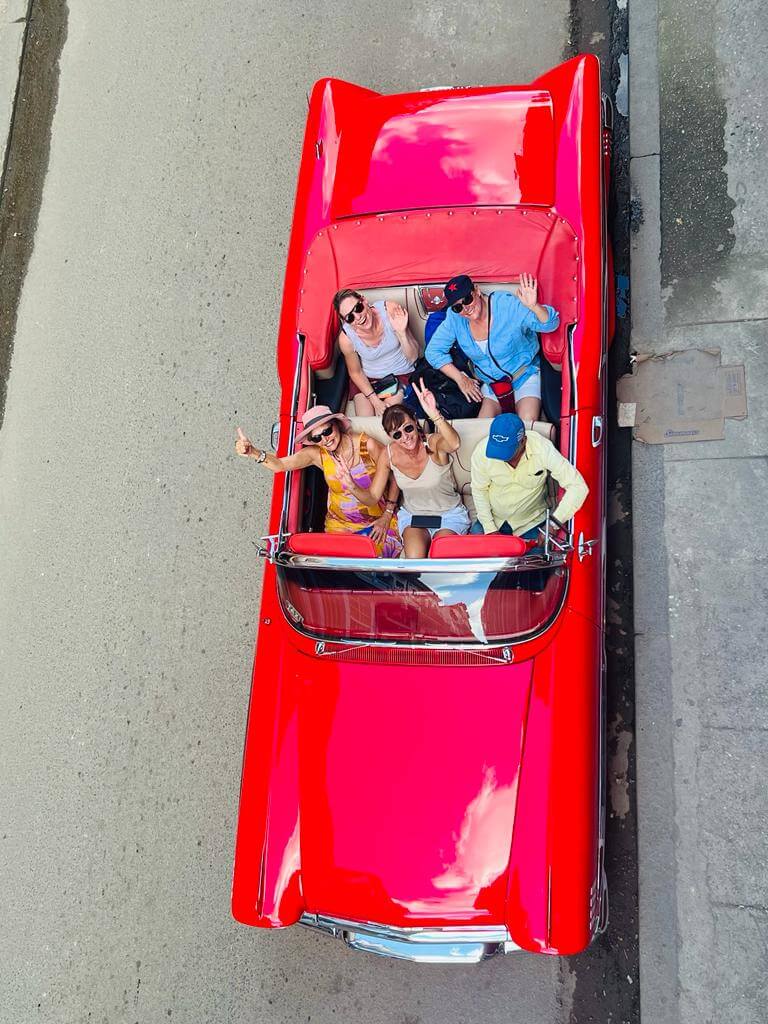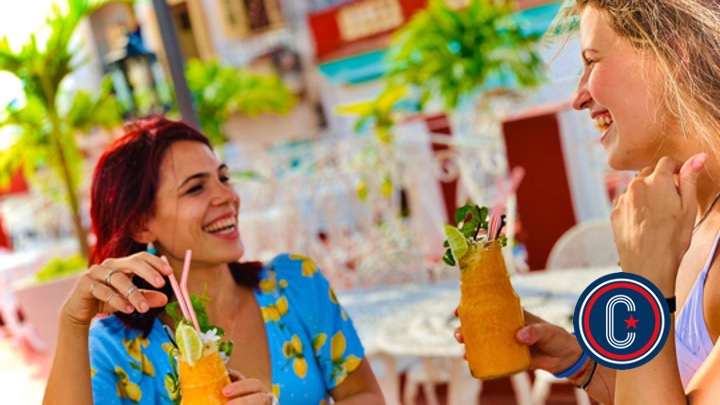Support the Cuban People
What better way to ‘Support the Cuban People’ than by combining Spanish language tuition and dance in Cuba. Delivered by professional instructors and supplemented by cultural immersion.
This program has been developed to support the Cuban people in either HAVANA or TRINIDAD. Enjoy Spanish and dance lessons in either city. Or combine with other programs to make a two or more week program.
Cuba is the most musical nation on the planet and where there is music… there is dance! After breakfast enjoy Spanish language lessons. In the afternoon we hit the dance school to learn how to dance in Cuba!
Trip Profile
Duration
1+ weeks
price
usd 495 per week
spanish level
beginner - advanced
restrictions
18+ or adult/chaperone
group size
2-6
Arrival
Havana
Departure
Havana
accomodation
Casa particulare
meals
breakfast & lunch
season
year round
Trip Highlights
- Live in the heart of Old Habana and (or) Trinidad and enjoy a full immersion while you support the cuban people. A unique opportunity to dance in Cuba and really understand what makes this amazing country so special.
- Busy program includes accommodation, breakfast & lunch and Spanish lessons throughout AND professional dance lessons featuring salsa EVERY weekday afternoon
- Start dates every week - ideally arriving Sunday/during the weekend but we are open 365 days a year!
- 18+ program with no upper age limit. Minors welcome if accompanied by an adult because this program is family friendly also! We welcome all ages and nationalities!
- Program Managers and all Cuban crew will help you feel at home providing 24/7 support including arranging transfers to/from Trinidad
- Support the Cuban People by learning to dance in Cuba - complies with US travel restrictions
Overview
This program starts and finishes in either Havana or Trinidad. Airport transfers and transfers to/from Habana-Trinidad available on request.
Our main language school/hostel in Habana – Casa Corazon Cuba – features same sex dorm rooms, separate toilet and shower facilities, dining & classrooms. There are two spacious roof terraces and lots of quality space to relax and enjoy the atmosphere and make friends with other program participants and our amazing local team. If you prefer your own space or book with a partner or friends then accommodation is at a nearby Casa Particulare where we have double, twin and triple rooms available with en suite/private bathrooms.
Wherever you stay Spanish lessons, lunch, program meetings and inpromtu social activities take place at Casa Corazon Cuba to support the Cuban people.
In Trinidad our traditional colonial Casa Particulare is less than 5 mins from the main square.
Monday to Friday features a busy daytime schedule; Spanish lessons in the mornings and dance in Cuba classes every afternoon. Weekends are more relaxed with optional trips to the beach and of course the legendary nightlife in both Habana and Trinidad!
What's Included
- Pre arrival support - email and Whatsapp - including optional airport transfers (private taxi - $40 each way)
- Accommodation, breakfast & lunch (not lunch in Trinidad) provided throughout. Shared dorm rooms for solo travellers and private double/twin/triple with en suite when more than one person booking (single room supplement also available)
- Spanish lessons Monday to Friday each morning. On the first morning there is a short written assessment and discussion to establish your level and objectives. You are then allocated to a teacher - beginner, intermediate & advanced classes all catered for!
- Dance in Cuba classes EVERY weekday afternoon at a professional dance school with 1:1 tuition
- Weekend excursions and activities including to nearby beaches of Playas del Este and Paseo del Prado 'arts & crafts' volunteering project (Habana only)
- Lots of optional weekend activities in Trinidad including the nearby beach and Cubanito Waterfall Tour
- Impromptu social activities and 24/7 support from our amazing Program Managers to help you maximise your free time
- Possibility to combine and extend programs as well as information and support should you want to continue your travels in Cuba after time spent with Corazon Cuba to support the Cuban people!
- Download our for practical information you may find useful
Description
Monday to Friday’s intensive Spanish lessons take place shortly after breakfast. Tuition is delivered by an accredited and licensed Cuban teachers and on day one you receive a short test to establish your level and objectives. Lessons take the format of 3 x 45 minute lessons each morning, with 15 minute breaks to refresh, making approximately 3 hours of Spanish lessons each day – 15 hours per week. Lessons are held from 09:00 sharp, Monday to Friday.
* The Cultural Immersion content features additional Spanish language tuition, oral comprehension and dialogue (approx. 4 hours per week).
Each afternoon Monday to Friday, usually from 14:00-15:00, you receive a structured private dance class (teacher student ratio 1:1). You are taken through your paces – lessons feature Salsa but depending your progress you may also be introduced to Son, Rueda de Casino, Mambo, Cha Cha Cha, and Rumba and perhaps a few moves you haven’t heard of… (Trinidad is the home of Salsa ‘Casino’). The lessons are delivered a short walk from your Casa by a licensed dance instructor, and in the evenings there are MANY free live music venues to dance in Cuba where you can do your homework!
* Men and women are separated into different classes so each can concentrate on their own footsteps!
During the 4 week program you have three weekends, and we include activities for each of these. For two weekends you are accompanied on a daytrip to a beach directly east of Havana. Journey time is 30 minutes by bus and you can enjoy the exhilarating rollers that break on these pristine sandy beaches.
The second weekend features a two-night trip to Viñales, a three hour drive to the central western region of Cuba.
Viñales is a UNESCO World Heritage destination owing to the outstanding landscape, traditional architecture and agricultural techniques still used.
The trip includes a horseride into the valley to drying houses where we learn about the art of curing tobacco and rolling cigars, and an early morning hike to view a spectacular sunrise.
In Trinidad you are treated to talks in Spanish by your host Alex on the ‘Origins of Cuban Dance & Music’. This is a pretty extensive subject on which Alex is both knowledgeable and passionate. Trinidad is home to Afro Cuban music and culture but you will discover that most musical genres the world over contain elements that can be traced to Cuba.
Weekly price includes accommodation (7 nights per week), breakfast & lunch, 15 hours intensive Spanish lessons, daily weekday dance lessons, escorted trips to the beach and other weekend activities plus a weekend in Viñales Valley (4 week program only though optional if staying less than 4 weeks).
Cost of extra night – accommodation & breakfast $40
Cost of airport transfer – each way $40
Useful Information
Immaculate beaches, lush green hills, dramatic rainforests and waterfalls; imposing mountain ranges, vibrant cities steeped in history and a defiant Revolutionary chic; the island of Cuba can rightfully claim to be one of the most unique getaways on earth.
The largest and most populous island in the Caribbean, Cuba has been somewhat time warped by its socialist revolution of 1959, and that, combined with the decadence and corruption of previous regimes has made it a sunshine isle of stark contrasts. Vintage American cars roar through the streets of Havana. Horses and carts carrying water and food stumble through the countryside. Graphic revolutionary insignia adorn walls just yards from a decadent colonial palace.
Much of the island’s allure lies in its spectacular beaches and thrilling scenery. Christopher Columbus wasn’t joking when he declared in 1492 the coast of Guardalavaca to be “the most beautiful land I have ever seen.” The beaches there are like something out of a dream, so it should come as no surprise that thousands of holidaymakers head there each year to soak up the sun on the improbably white sands, dip into the warm, turquoise waters and indulge in the five star luxury that many of the hotels and resorts there provide.
While the world famous cocktails may surpass the hearty but occasionally limited food and the travelling around might be slightly more difficult than elsewhere in the Caribbean, Cuba more than makes up for this with its stunning climate, captivating history, generous charm and swinging salsa rhythms.
You need a visa (also known as Tourist Card) to enter Cuba. These are easy to buy online – we recommend the following service, see;
The standard Tourist Card is now valid for 90 days.
You need to buy this at least 3 days before travel. The process is easy – standard questions – you will then be emailed an e-visa code that you need to input into a D’Viajeros form your airline will ask you to complete prior to flying. This form is also straight foward and you should have it available (hard or soft copy on your phone) to show when you board your flight and when you arrive in Cuba.
For US citizens / guests travelling directly from the US to Cuba we recommend the following service, see;
All our programs comply with ongoing US travel restrictions and are 100% legal for US and non US citizens alike. It is no longer necessary to apply to ‘OFAC’ for special permission to visit Cuba. When flying direct from the US to Cuba your airline will require you to sign and retain a one page ‘affidavit’.
This document lists 12 permitted categories of travel to Cuba. Please simply tick the box marked ‘SUPPORT THE CUBAN PEOPLE’. This is a travel category our programs comply with.
Following the abolition of the CUC (convertible peso) in 2021 the only official national currency now in circulation is the Cuban Peso (also known as ‘Moneda Nacional’). However, USD and EURO cash is widely accepted and easily converted into local currency.
Bank cards drawn on US banks are still not accepted in Cuba so US residents should bring sufficient USD cash for all your spending requirements while in Cuba.
For other visitors, to ensure maximum flexibility and to achieve the best rate of exchange, we also recommend cash – ideally USD or EURO. However, bank ATM machines are widely available throughout Cuba. Only government owned business accept card payments.
WiFi is still not widely available in Cuba except on a pay as you go basis in government hotels and internet cafes. However, inexpensive SIM cards can now be purchased on arrival – our local team can help you buy these. It may be advisable to ensure your phone is ‘unlocked’ and/or has a VPN service to ensure continuity of services when in Cuba. The situation is constantly evolving and improving so there is no need to be ‘offline’ for extended periods – unless you would like to be!
Cuban’s are big meat eaters but there is a varied and plentiful supply of excellent locally produced seasonal fruit and vegetables as you would expect from a tropical country.
However, strict vegetarians should please ask as often the ubiquitous black and brown beans served with every meal is started with some pork fat. The good news is that though repetitive Cuban food is very healthy with virtually no processed foods and almost organic given a of shortage of pesticides.
CORAZON CUBA Reviews






